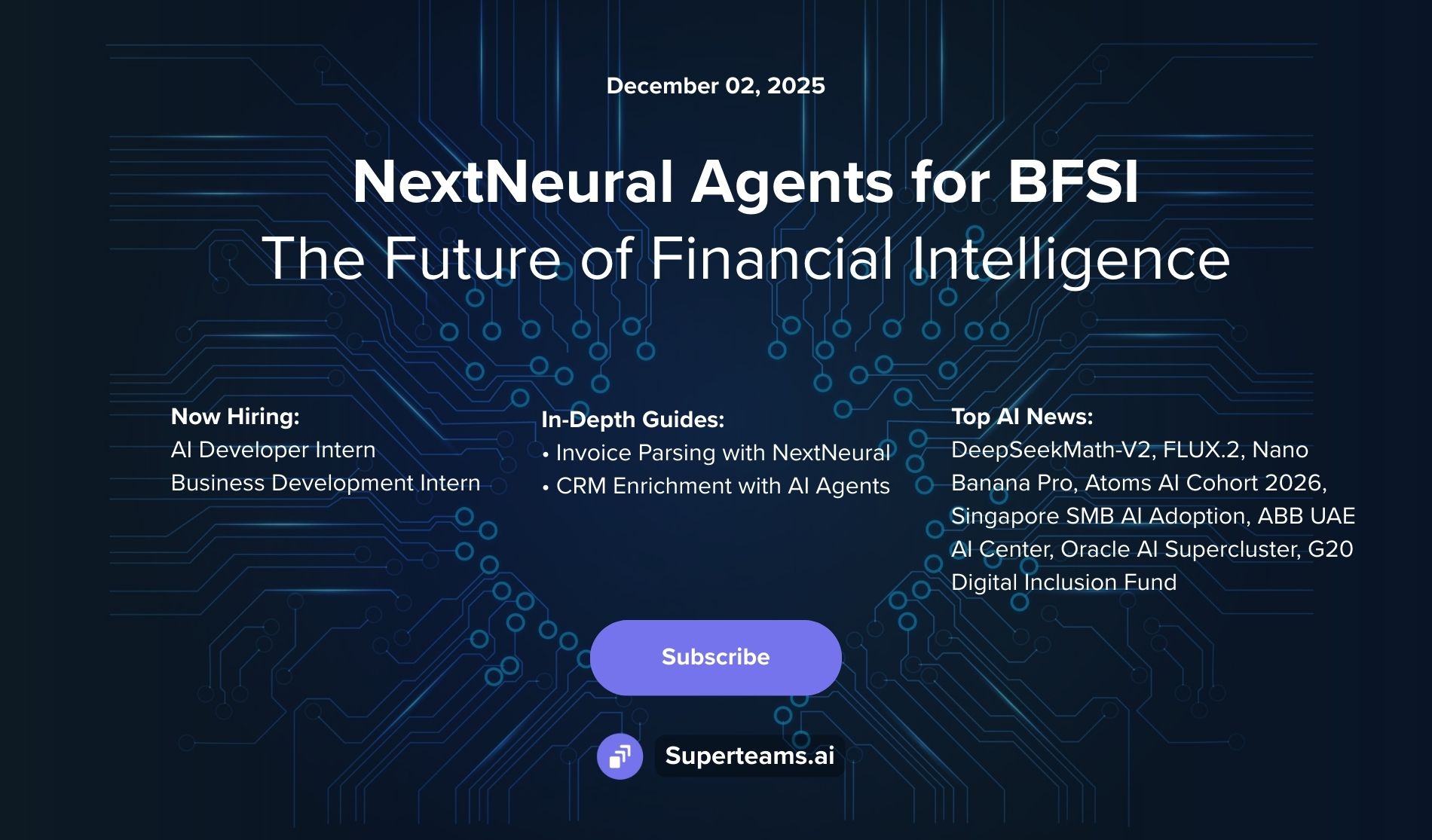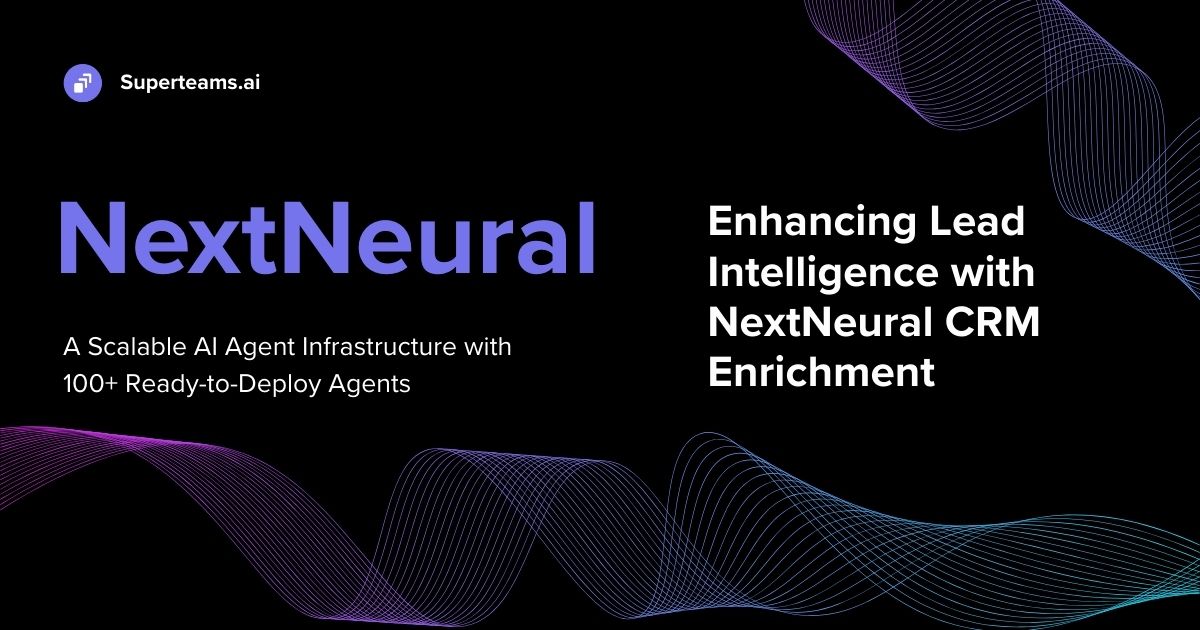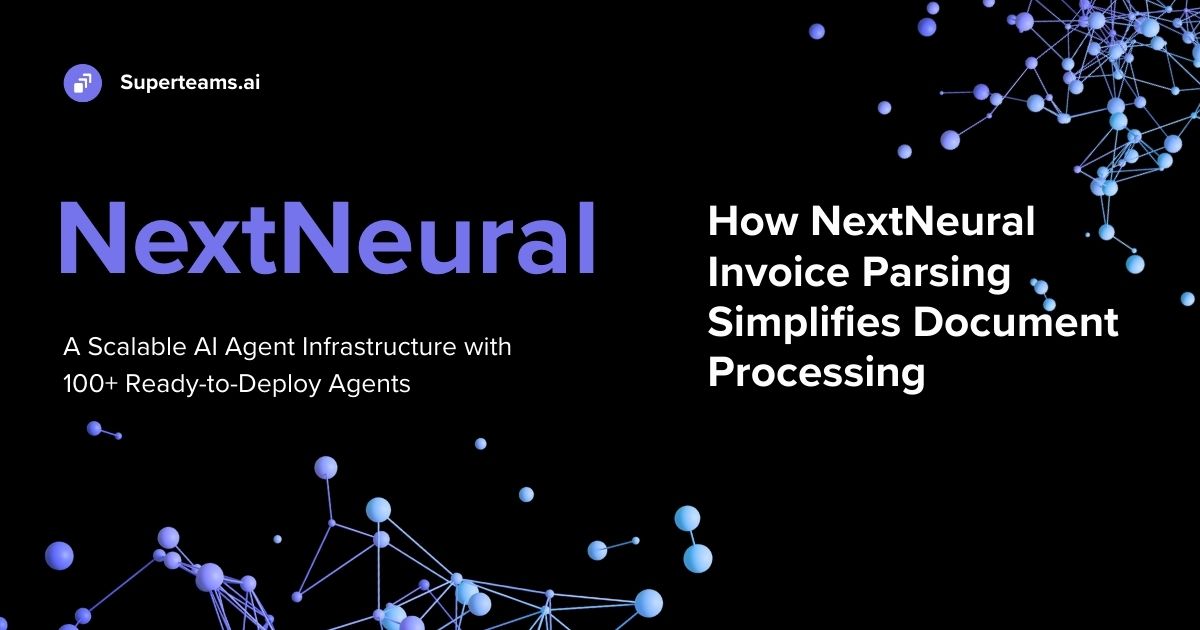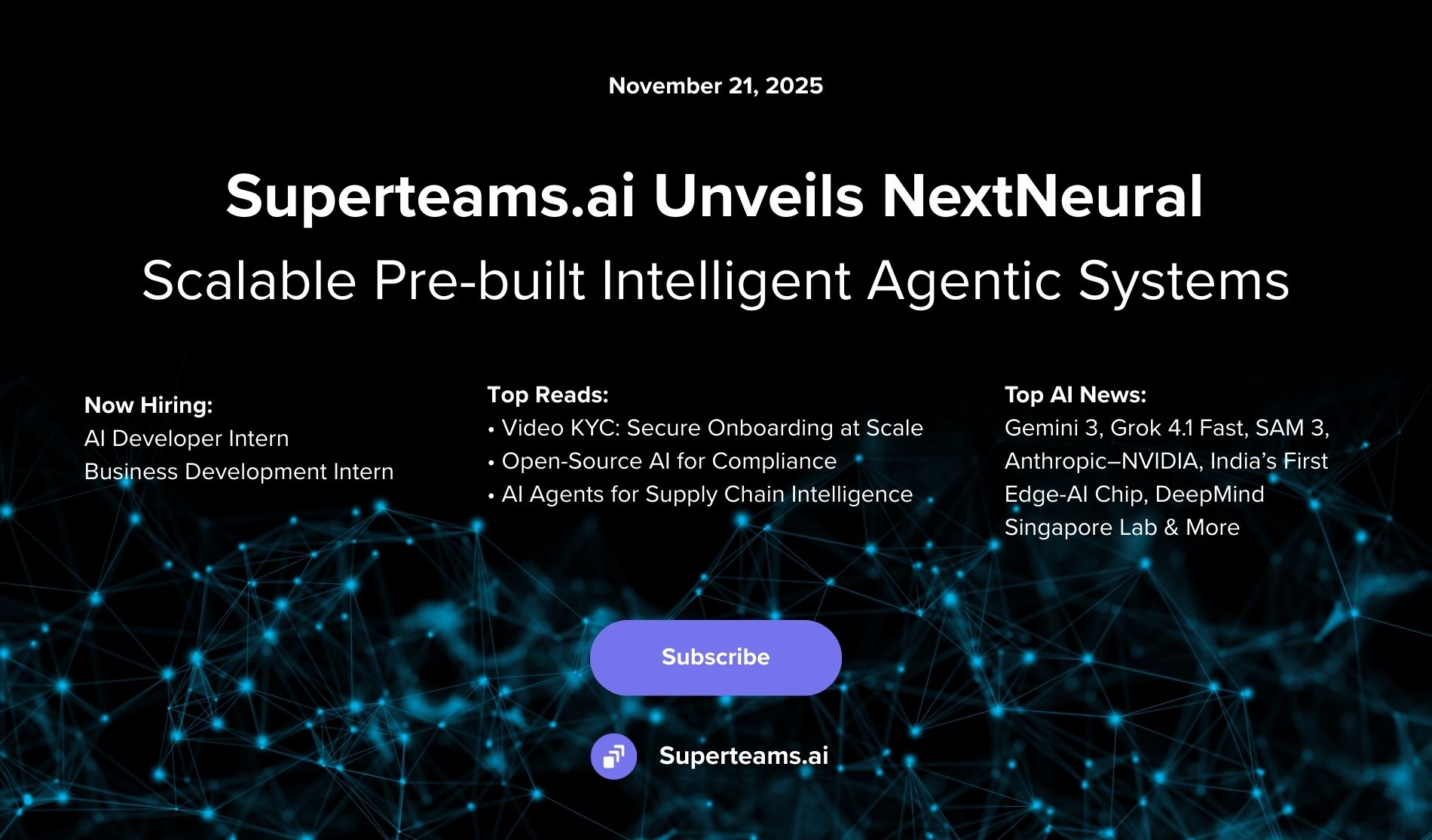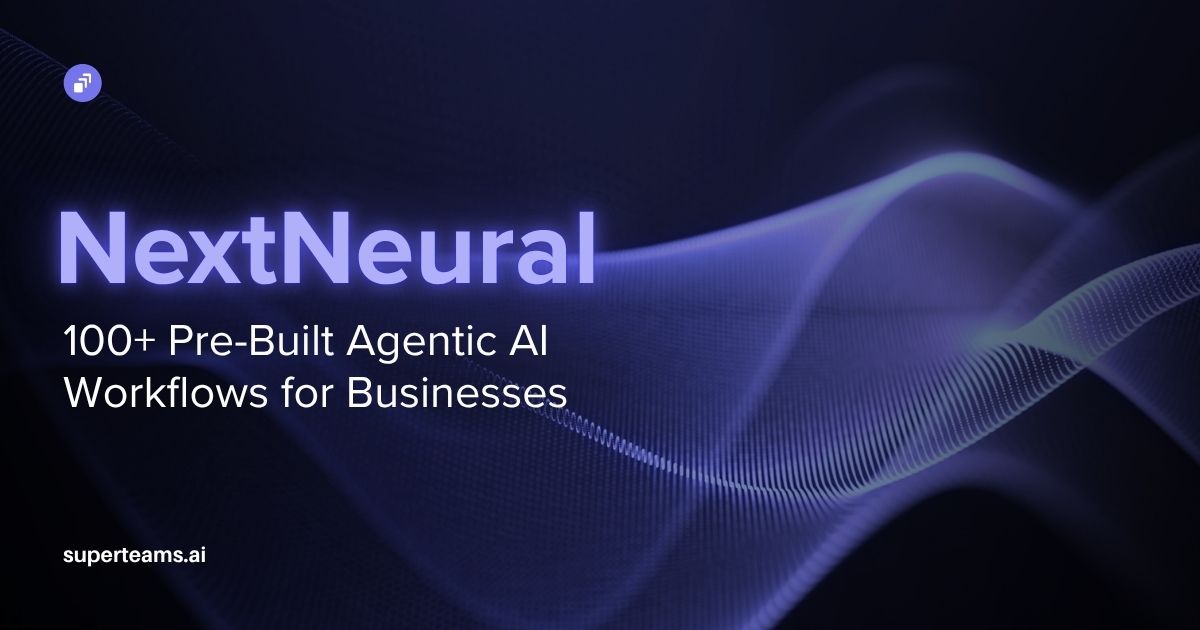Reimagining Supply Chain and Vendor Management in Manufacturing with AI Agents
AI agents are revolutionising manufacturing by automating supply chain, invoicing, and vendor management—enhancing visibility, reducing errors, and driving productivity across operations.
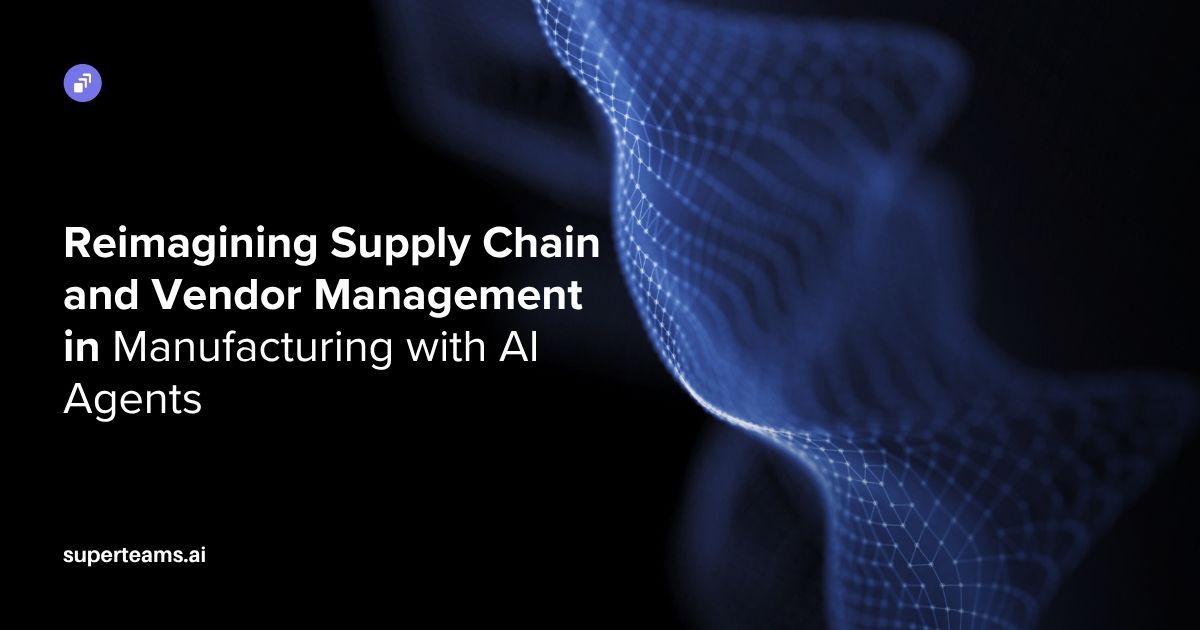
India’s manufacturing sector has made major strides in digitisation over the last decade. According to a 2024 NASSCOM report, over 65% of Indian manufacturers have adopted AI and analytics — up from just 45% in 2022. By 2027, AI-driven automation is expected to boost manufacturing productivity by as much as 25%. NITI Aayog projects that accelerated AI adoption across industries could contribute nearly US$ 600 billion to India’s GDP — with manufacturing capturing a large share of that growth.
But despite this momentum, most factories still face a common roadblock — limited visibility into their operations. Data from suppliers, logistics partners, and production units remain scattered across ERP systems, spreadsheets, emails, and even WhatsApp groups. Add to this the flood of unstructured information — scanned invoices, delivery challans, handwritten receipts, and shipment photos — and it’s easy to see why supply chain and vendor management continue to be complex and error-prone.
Where AI Agents Step In
Until recently, extracting meaningful insights from such unstructured data was next to impossible. Traditional automation tools struggled with handwritten or scanned documents, let alone correlating multiple data sources in real time. The result? Slow, manual workflows, inconsistent data, and significant productivity loss.
AI agents change that. Built on transformer-based architectures, these intelligent systems can read, see, hear, and converse — allowing them to process text, images, audio, and video with human-like understanding. From identifying defects in production lines to reading poorly scanned invoices, AI agents are helping manufacturers automate processes once thought too complex for machines.
AI-Powered Supply Chain Intelligence
The latest generation of AI agents goes far beyond rule-based automation. They integrate multiple AI models — from Optical Character Recognition (OCR) and computer vision to advanced language models — to bring intelligence to every step of the manufacturing workflow.
Take vision-language models (VLMs), for instance. These systems can extract structured data from scanned or handwritten invoices — line items, GST details, totals — and store it in a searchable database. Similarly, computer vision models such as YOLO or Fast R-CNN can analyse camera feeds to verify raw materials, detect defects, or assess quality in real time.
This creates a continuous feedback loop — where approvals, payments, and production updates can happen automatically, without manual data entry or supervision.
Conversational Intelligence for Manufacturing Teams
One of the most practical advantages of AI agents is their ability to communicate naturally. Using large language models (LLMs), these systems can understand and respond in everyday language — even in Hindi or other Indic languages.
A procurement manager, for example, could simply ask on WhatsApp:
“Has vendor X submitted their invoice?”
And receive an instant, accurate reply:
“Invoice #892 received on Oct 5, matched with PO #214, pending finance approval.”
This brings intelligence directly into familiar tools and workflows — no dashboards, no data reconciliation — just instant answers.
The same natural language interface can also power employee training and support. Instead of searching through long manuals or SOP documents, employees can ask specific questions and get precise guidance instantly. This reduces onboarding time and ensures institutional knowledge is always accessible.
How These AI Agents Work
AI agents unify data across your organisation — from ERP systems and spreadsheets to scanned invoices and delivery challans. They use AI models to extract, classify, and store this information in a structured database enhanced with vector search, allowing the system to understand meaning and relationships between data points.
This enables semantic search and intelligent analytics. The agents can reason across documents, identify anomalies, and even forecast material shortages or delays. Because they’re built on private, sovereign AI infrastructure, all sensitive business data — such as supplier records and invoices — stays within the company’s control.
Managers can interact with these systems in plain language and receive answers backed by verifiable data references. This means no more toggling between dashboards or files — just actionable insights delivered in real time.
The Competitive Edge of AI in Manufacturing
The impact of adopting AI agents is immediate and measurable. Procurement and finance teams process vendor queries faster. Supply chain teams gain real-time visibility into orders, deliveries, and stock. Vendors get paid sooner, and delays are minimised.
But beyond efficiency, AI delivers something even more valuable — clarity and confidence in operations. With AI agents, manufacturers move from reactive problem-solving to proactive decision-making, spotting issues before they escalate.
In today’s competitive manufacturing environment, speed and trust are everything. The companies that unify their data and automate intelligently will be the ones that thrive. AI agents don’t just make operations smarter — they make them resilient, transparent, and future-ready.
For Indian manufacturers, this shift marks more than a technology upgrade. It’s the foundation for a new era of growth — one where visibility, intelligence, and agility define success.
Link to the original article: https://www.manufacturingtodayindia.com/simplifying-supply-chain#:~:text=AI%20agents%20are%20transforming%20manufacturing,management%20with%20real%2Dtime%20intelligence.&text=We%20hear%20a%20lot%20about,improved%20workflows%20and%20boosted%20productivity


